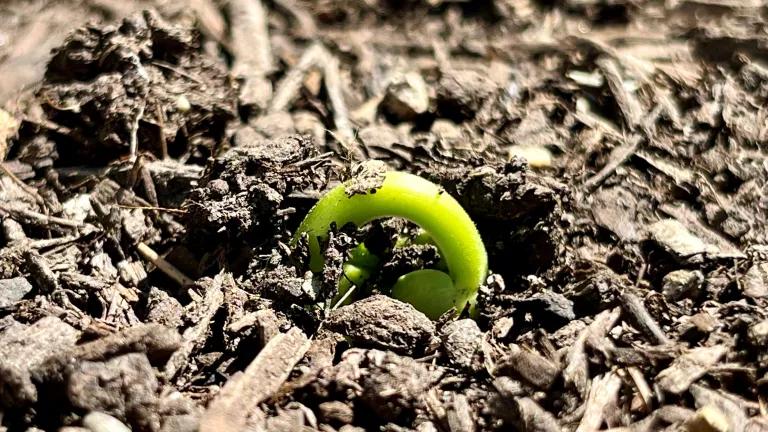How California’s Water Rights System Gouges You and Me
It's time for California’s water managers to reform this antiquated system and prioritize water for human health and safety and for the shared environment over water for farms.

James Mattil/Dreamstime
I’ve written recently about the deep inequities built into California’s water rights system, embedding California’s racist past firmly into our present system of water distribution. The systematic exclusion of Native Americans, Asians, and other people of color from claiming and owning water rights during European settlement of California means that those communities continue to be deprived of critical water resources even today. But there is another lingering aspect of California’s antiquated water rights system that affects nearly everyone who lives in the state, and that is the price of water. Just as our racist and exclusionary past shapes access to water, it also shapes the cost of water, again privileging the few European immigrants who laid claim to water in the late nineteenth and early twentieth century to the detriment of nearly everyone else.
Here is a snapshot of the wildly varying price for water across different constituencies in 2022:
| Glenn-Colusa Irrigation District | Central California Irrigation District | Metropolitan Water District of Southern California | Westland Water District | Bottled water |
| Base rate in 2022: $21.79/acre-foot | Rate for first 2.5 acre-feet/acre in 2022: $20/acre-foot | Tier 1 full service untreated rate in 2022: $799/acre-foot | Wholesale rate for untreated water for low-income communities: $432.37/acre-foot | $420,411/acre-foot (at ~ $1.29/gallon x 325,900 gallons in an acre-foot) |
“Senior” water rights holders – those whose rights flow from the European immigrants who settled California in the late 1800s/early 1900s – paid around $20/acre-foot for water in the severe drought year of 2022. That includes the Glenn-Colusa Irrigation District and Central California Irrigation District, both of which claim “pre-1914” water rights. Those two districts are typical of a larger set of diverters of which they are a part: Glenn-Colusa is part of a group of over 100 primarily irrigation districts that form the Sacramento River Settlement Contractors, and Central California Irrigation District is part of a group of irrigators called the Exchange Contractors. Together, the Sacramento River Settlement Contractors and Exchange Contractors lay claim to almost three million acre-feet of water annually – about six times the amount of water that the City of Los Angeles uses in a year. And they get their water on the cheap as a function of the claimed “seniority” of their water rights.
Compare that to the cost of untreated water charged by the Metropolitan Water District of Southern California (MWD) to its urban water district customers, including the City of Los Angeles, which was $799/acre-foot in 2022, or nearly 40 times the cost paid by senior water rights holders. The cost of treated water is even higher, but one would expect that cost jump to ensure the water meets drinking water standards. Why the huge cost differential? MWD sells water imported from the Sacramento and San Joaquin Rivers, the same rivers from which the Glenn-Colusa and Central California Irrigation Districts withdraw their supply. There are transportation costs to move that water through miles of canals to southern California, but those costs hardly justify a 40-fold increase in price. Indeed, the Westlands Water District charged its urban water users over $430/acre-foot for untreated water in 2022, or over 20 times the cost paid by senior water rights holders, and it is adjacent to the Central California Irrigation District. The cost of moving water does not explain this vast differential.
Instead, almost every residential water customer in the State of California pays a considerable fee for using water while senior water rights holders essentially get their water for free, paying only minimal diversion charges. The cost differential is even more stark for those communities that rely on groundwater wells for drinking and bathing, but where those wells have dried up largely due to excessive overpumping on nearby agricultural lands. In the last year alone, over 5,100 households in the state have reported their wells going dry. Many of those households must rely on bottled water for drinking without any supply from their taps. At an average price of $1.29/gallon, an acre-foot of bottled water costs a whopping $420,411/acre-foot (there are approximately 325,900 gallons in an acre-foot). That’s over 20,000 times the cost of water paid by senior water rights holders.
Granted, these are not all apples-to-apples comparisons. Bottled water is not the same quality as that pulled directly from a river. But the fact remains that today’s “senior” water rights holders, who gained their preferential status purely as the result of profiting from California’s violent and racist history, pay far less to take water from our rivers to irrigate their farms than almost every California resident pays for water to drink.
It's time for California’s water managers to reform this antiquated system and prioritize water for human health and safety and for the shared environment over water for farms.



